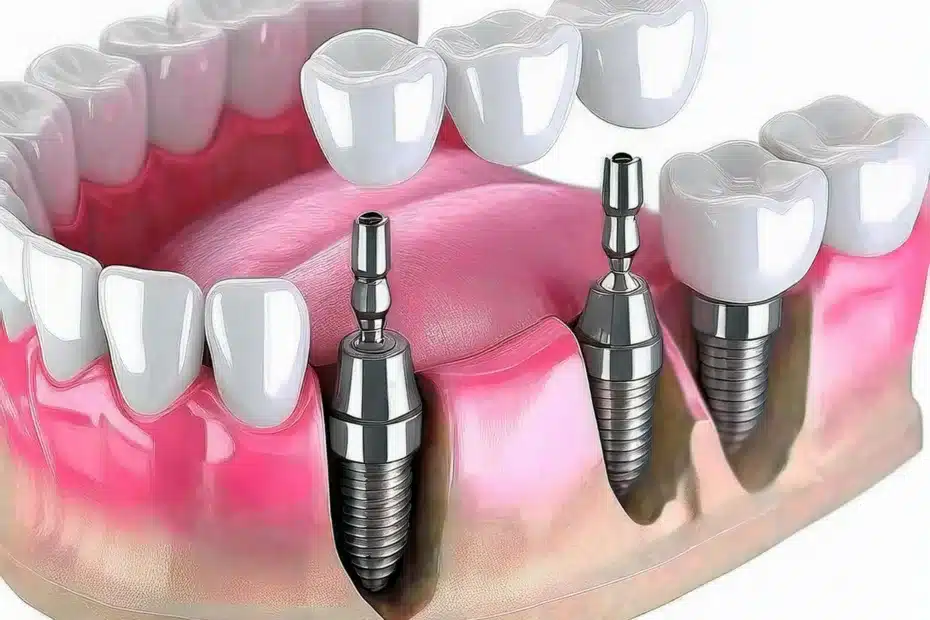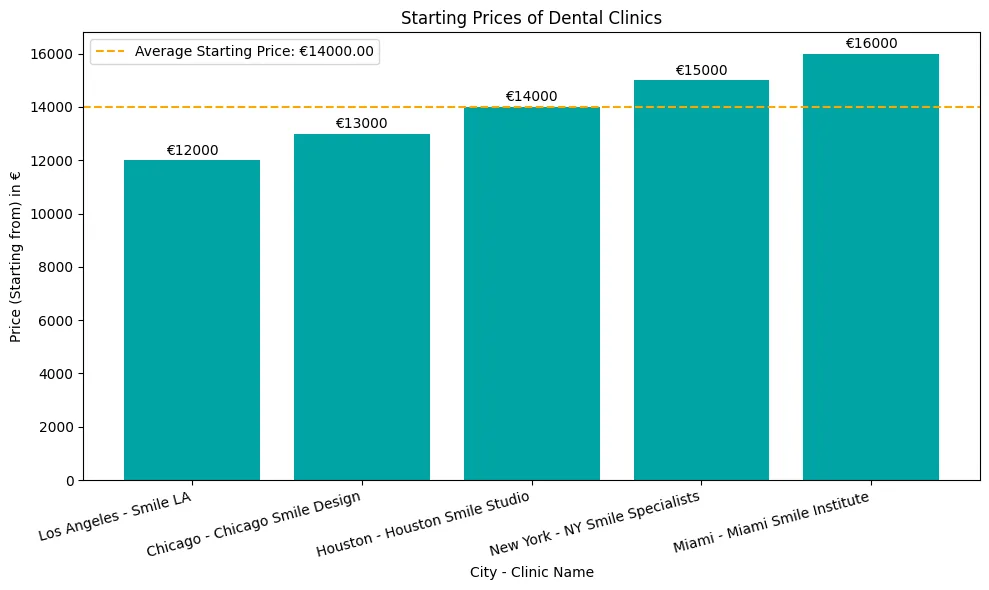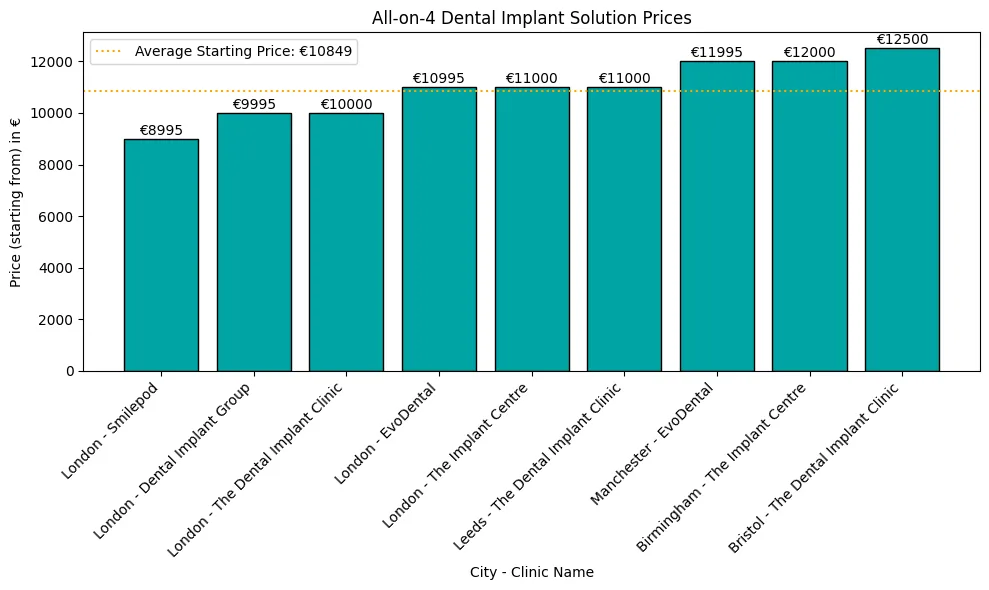Implanti dentarUrat e mbështetura mund të ndryshojnë jetën për ata që u mungojnë dhëmbët, por çfarë janë ato dhe si funksionojnë?
Nëse jeni të lodhur nga protezat e pakëndshme ose urat që nuk përshtaten siç duhet, ndoshta po pyesni nëse urat dentare të mbështetura nga implantet janë përgjigjja që keni kërkuar.
Çfarë janë urat e mbështetura nga implantet?
Urat e mbështetura me implant janë një lloj restaurimi dentar që përdor implantet dentare për të mbështetur një urë, një zgjidhje solide për dhëmbët që mungojnë.
Me një shkallë suksesi 92.3% (1), ato ofrojnë estetikë, funksionalitet dhe qëndrueshmëri më të mirë, duke i bërë ato një zgjedhje popullore për ata që kërkojnë një zgjidhje afatgjatë.
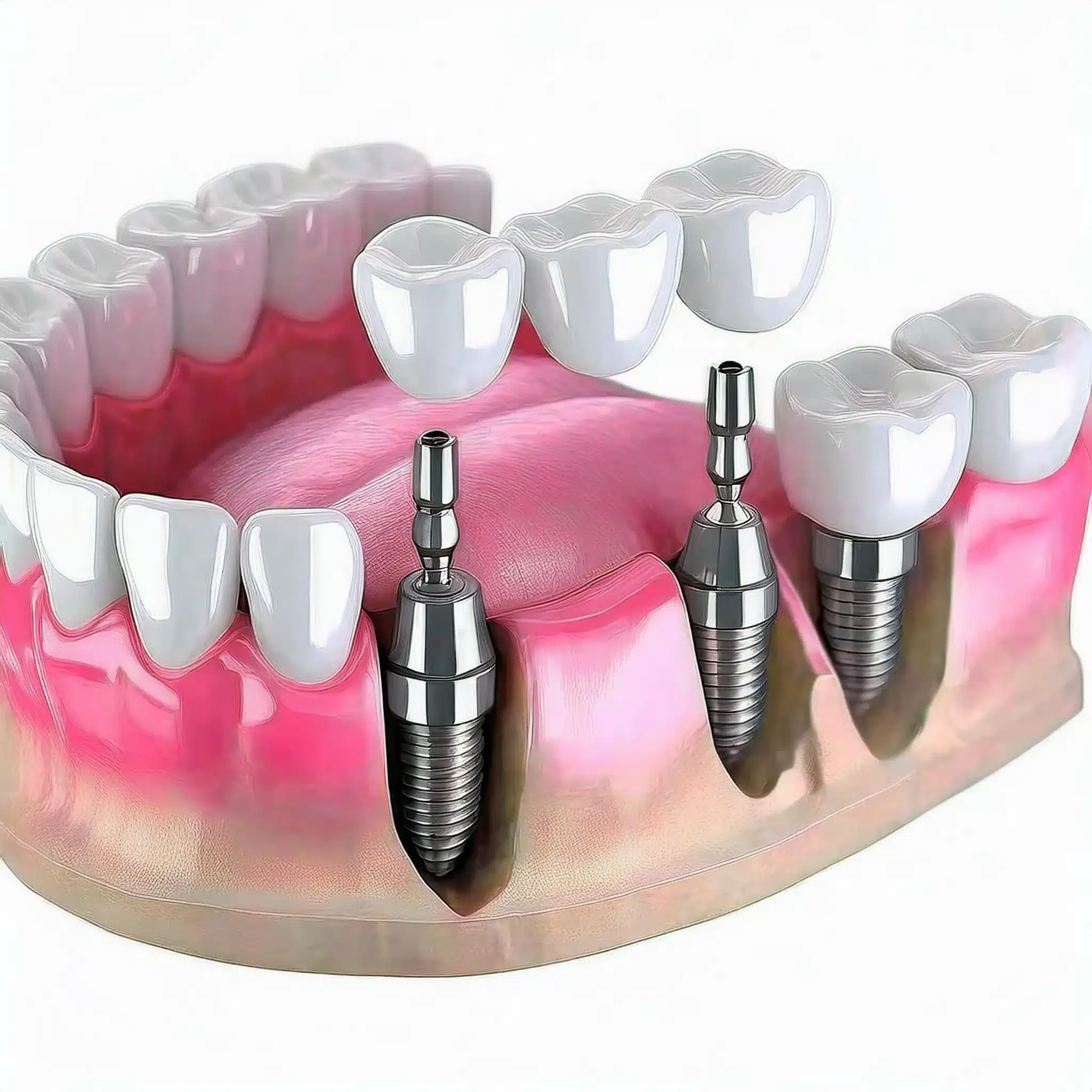
Llojet e urave të mbështetura nga implantet dentare
Urat e fiksuara të mbështetura nga implantet
Urat e fiksuara të mbështetura me implant janë një lloj ure e mbështetur nga implanti dentar që është ngjitur përgjithmonë me kockën e nofullës.
Kjo lloj ure dentare është e përshtatshme për pacientët me densitet të mjaftueshëm kockor, të cilët kërkojnë një zgjidhje afatgjatë për dhëmbët që mungojnë.
Sipas një studimi në Journal of Clinical Oral Implants Research, urat fikse të mbështetura nga implantet kanë një shkallë suksesi 97.3% gjatë 5 viteve (4).
Urat e lëvizshme të mbështetura nga implantet
Urat e lëvizshme të mbështetura nga implantet janë projektuar që të jenë të lëvizshme nga pacienti.
Kjo lloj ure dentare është e përshtatshme për pacientët me densitet të kufizuar kockor ose që kërkojnë një zgjidhje më të përballueshme për dhëmbët që mungojnë.
Një studim në Journal of Prosthetic Dentistry zbuloi se urat e lëvizshme të mbështetura nga implantet mund të përmirësojnë kënaqësinë e pacientit dhe cilësinë e jetës (5).
| Lloji i urës | Përshkrimi |
|---|---|
| Urat e fiksuara të mbështetura nga implantet | Një urë fikse e lidhur me implantet dentare, duke ofruar një zgjidhje të qëndrueshme dhe të qëndrueshme për dhëmbët që mungojnë. |
| Urat e lëvizshme të mbështetura nga implantet | Një urë e lëvizshme e ngjitur në implantet dentare, duke ofruar një zgjidhje të përshtatshme dhe komode për dhëmbët që mungojnë. |
Përfitimet e urave të mbështetura nga implantet dentare
Estetike
Urat dentare të mbështetura nga implantet mund të përmirësojnë buzëqeshjen tuaj.
Me një shkallë suksesi 90–95% gjatë 10 viteve (2), ato janë një zgjidhje afatgjatë për dhëmbët që mungojnë.
Implantet janë krijuar për t'u dukur dhe ndjerë si dhëmbët tuaj natyralë, kështu që është e vështirë për të tjerët të vërejnë se keni një implant.
Funksionaliteti
Urat dentare të mbështetura nga implantet mund të përmirësojnë gjithashtu funksionalitetin e dhëmbëve tuaj.
Ndryshe nga protezat tradicionale ose urat, të cilat mund të rrëshqasin ose të bien, urat dentare të mbështetura nga implantet ngjiten në kockën e nofullës.
Kështu që ju mund të hani, flisni dhe bëni aktivitete të përditshme me besim.
Në fakt, studimet kanë treguar se implantet dentare mund të përmirësojnë efikasitetin e përtypjes deri në 90% (3).
Qëndrueshmëri dhe jetëgjatësi
Urat dentare të mbështetura nga implantet janë projektuar të zgjasin për shumë vite.
Me kujdesin dhe mirëmbajtjen e duhur, ato mund të zgjasin deri në 20-30 vjet ose më shumë (2), kështu që ato janë një zgjidhje me kosto efektive për dhëmbët që mungojnë pasi mund të reduktojnë punën e dhëmbëve në të ardhmen.
| Përfitimet | Përshkrimi | Statistikat |
|---|---|---|
| Estetikë e përmirësuar | Urat e mbështetura nga implantet dentare mund të përmirësojnë pamjen e buzëqeshjes suaj. | Shkalla e suksesit 92,31 TP3T (1) |
| Funksionalitet i përmirësuar | Urat e mbështetura nga implantet dentare mund të përmirësojnë funksionalitetin e dhëmbëve tuaj. | Shkalla e suksesit 90-95% gjatë një periudhe 10-vjeçare (2) |
| Qëndrueshmëri dhe jetëgjatësi | Urat e mbështetura nga implantet dentare mund të zgjasin 20-30 vjet ose më shumë. | Jetëgjatësia mesatare 20-30 vjet (2) |
| Norma e suksesit | Urat e mbështetura nga implantet dentare kanë një shkallë të lartë suksesi. | Shkalla e suksesit 92,31 TP3T (1) |
Si funksionojnë urat e mbështetura nga implantet dentare?
Urat e mbështetura nga implantet dentare funksionojnë duke përdorur implante dentare për të mbështetur një urë, një zgjidhje solide për dhëmbët që mungojnë.
Llojet më të zakonshme të përdorura janë implantet dentare endosteale, të cilat janë krijuar për të imituar rrënjët natyrale të dhëmbëve dhe janë prej titani, një material biokompatibël që është i fortë dhe i qëndrueshëm
Implantet janë të dizajnuara për të imituar rrënjët natyrale të dhëmbëve dhe janë prej titani, një material biokompatibël që është i fortë dhe i qëndrueshëm (6).
Procedura për Urat e Mbështetura me Implante Dentare
Procedura për ura të mbështetura nga implantet dentare përfshin:
Konsultimi dhe planifikimi: Së pari, duhet të konsultoheni me një dentist ose kirurg oral për të parë nëse urat dentare të mbështetura nga implantet janë të përshtatshme për ju.
Vendosja e implantit: Më pas, implantet vendosen në kockën e nofullës. Kjo bëhet me anestezi lokale dhe zgjat rreth 1-2 orë.
Shërimi: Pas vendosjes së implanteve, kocka e nofullës duhet të shërohet dhe të integrohet me implantet. Kjo mund të zgjasë disa muaj.
Vendosja e urës: Pasi implantet të jenë shëruar, ura dentare mund të vendoset sipër implanteve.
Një studim në Journal of Oral Implantology zbuloi se shkalla e suksesit të urave të mbështetura nga implantet dentare është 95% gjatë 5 viteve (7), kështu që ato janë një zgjidhje e provuar dhe e testuar për dhëmbët që mungojnë.
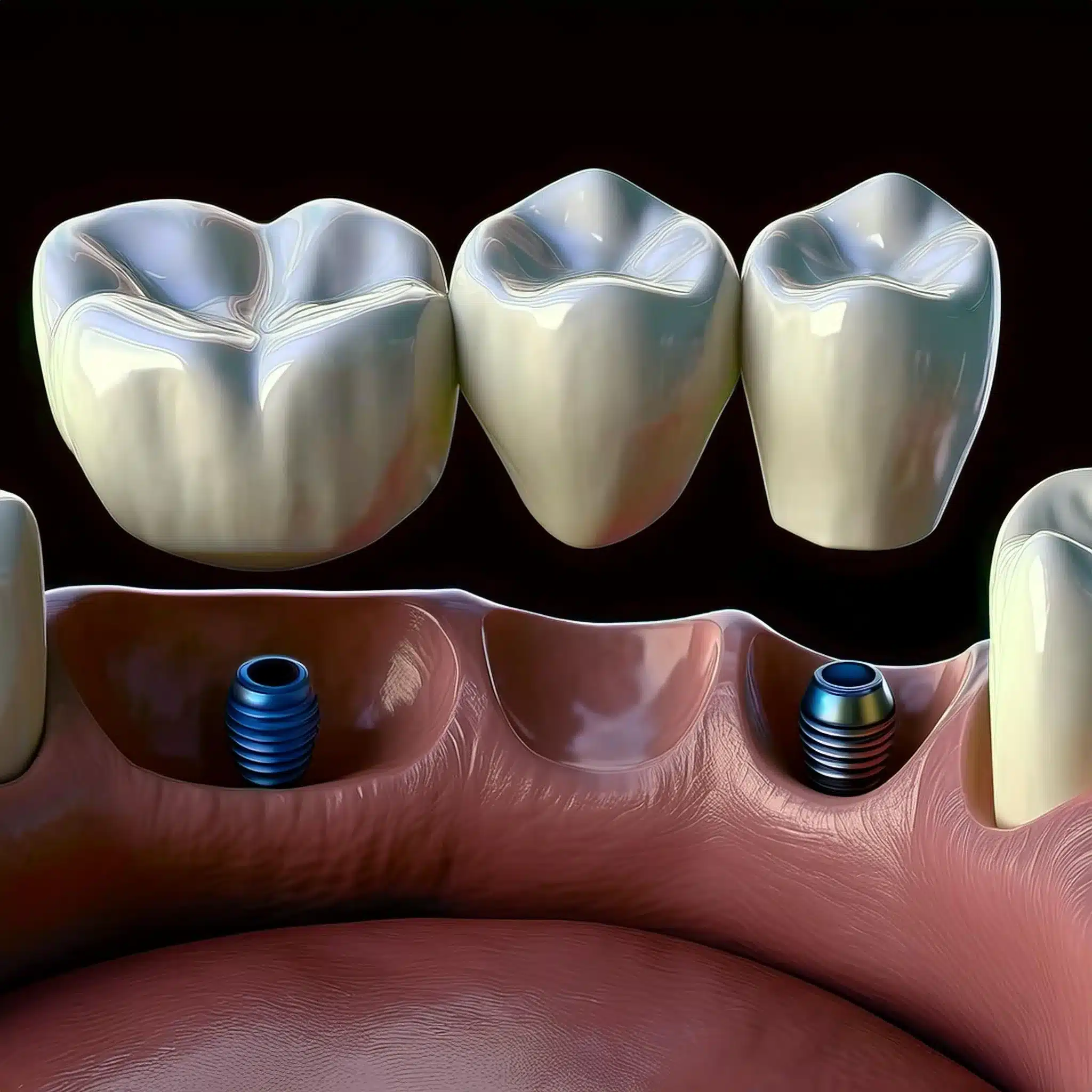
Kush është një kandidat i mirë për ura të mbështetura nga implantet dentare?
Urat dentare të mbështetura nga implantet janë një opsion i mundshëm trajtimi për pacientët me dhëmbë të humbur, por kush është një kandidat i mirë për këtë procedurë?
Sipas një studimi në Journal of Clinical Oral Implants Research, pacientët me densitet të mjaftueshëm kockor dhe shëndet të mirë të përgjithshëm janë kandidatë idealë për ura të mbështetura nga implantet dentare (6).
Konsideratat
Kur merrni parasysh urat dentare të mbështetura me implant, duhet të keni parasysh:
Numri dhe vendndodhja e dhëmbëve që mungojnë
Gjendja e dhëmbëve dhe mishrave përreth
Shëndeti i përgjithshëm dhe historia mjekësore e pacientit
Mënyra e jetesës dhe zakonet e pacientit (pirja e duhanit, kërcitja ose shtrëngimi i dhëmbëve)
Një studim në Journal of Prosthetic Dentistry zbuloi se pacientët me një histori të sëmundjes periodontale ose prishjes së dhëmbëve mund të jenë në rrezik më të lartë për komplikime me ura të mbështetura nga implantet dentare (7).
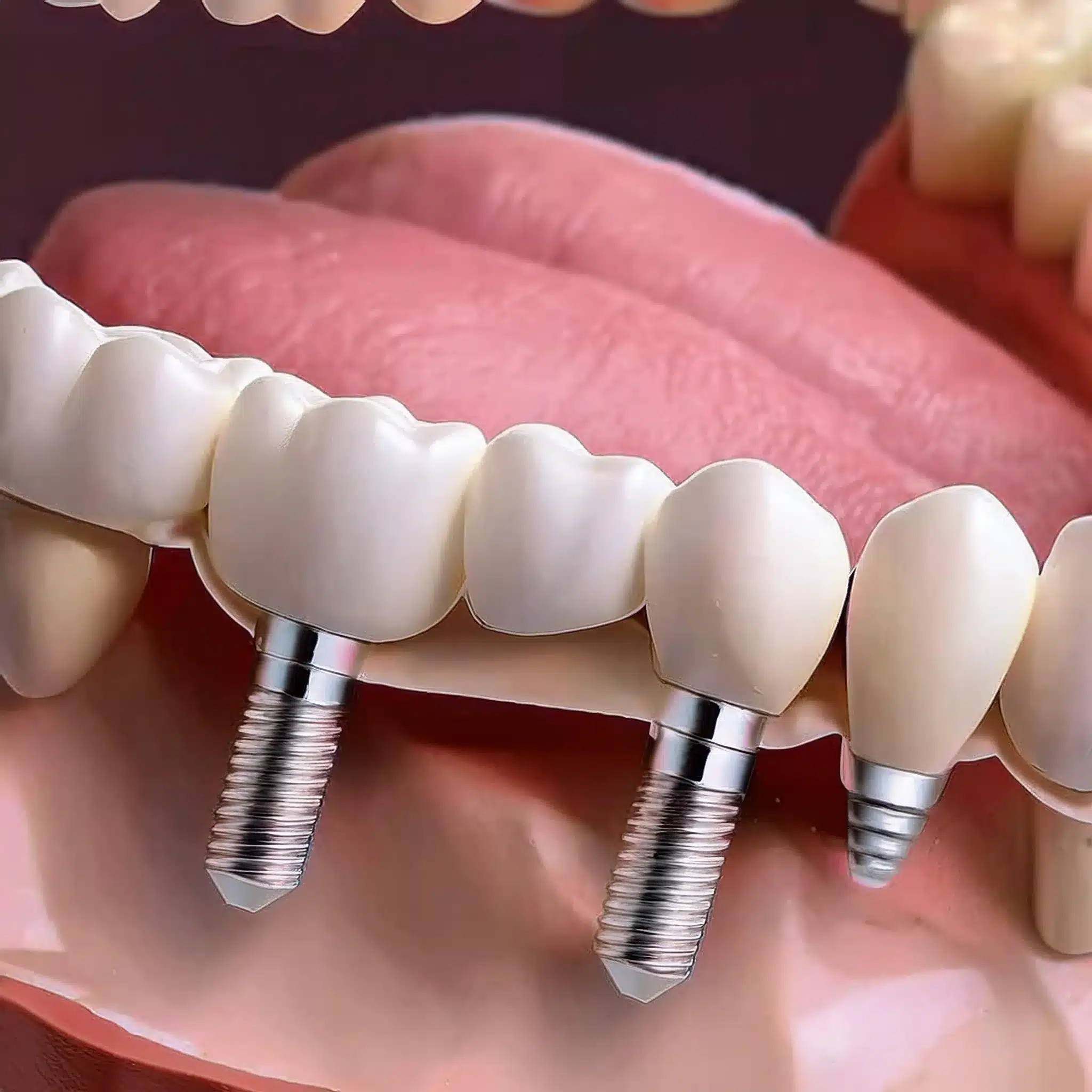
Çfarë duhet të pres gjatë procedurës?
Urat dentare të mbështetura nga implantet janë një procedurë komplekse që kërkon planifikim dhe ekzekutim të kujdesshëm.
Sipas një studimi në Journal of Oral Implantology, procedura përfshin disa faza: konsultimi, planifikimi, vendosja e implantit dhe vendosja e urës (4).
Përgatitja para procedurës
Para procedurës, pacientët zakonisht do t'i nënshtrohen një ekzaminimi të plotë dhe konsultimit me dentistin e tyre ose kirurgun oral.
Kjo do të përfshijë një rishikim të historisë së tyre mjekësore, një ekzaminim të plotë të dhëmbëve dhe mishrave të dhëmbëve dhe një diskutim të opsioneve të tyre të trajtimit.
Sipas një studimi në Journal of Clinical Oral Implants Research, pacientët me një histori të sëmundjes periodontale ose prishjes së dhëmbëve mund të kenë nevojë për trajtim shtesë përpara se të kenë vendosjen e urës së mbështetur nga implanti dentar (5).
Procedura
Procedura fillon me vendosjen e implanteve.
Kjo bëhet me anestezi lokale dhe zgjat rreth 1-2 orë.
Sipas një studimi në Journal of Prosthetic Dentistry, implantet vendosen në kockën e nofullës në një kënd prej 30-40 gradë për të maksimizuar stabilitetin dhe mbështetjen (1).
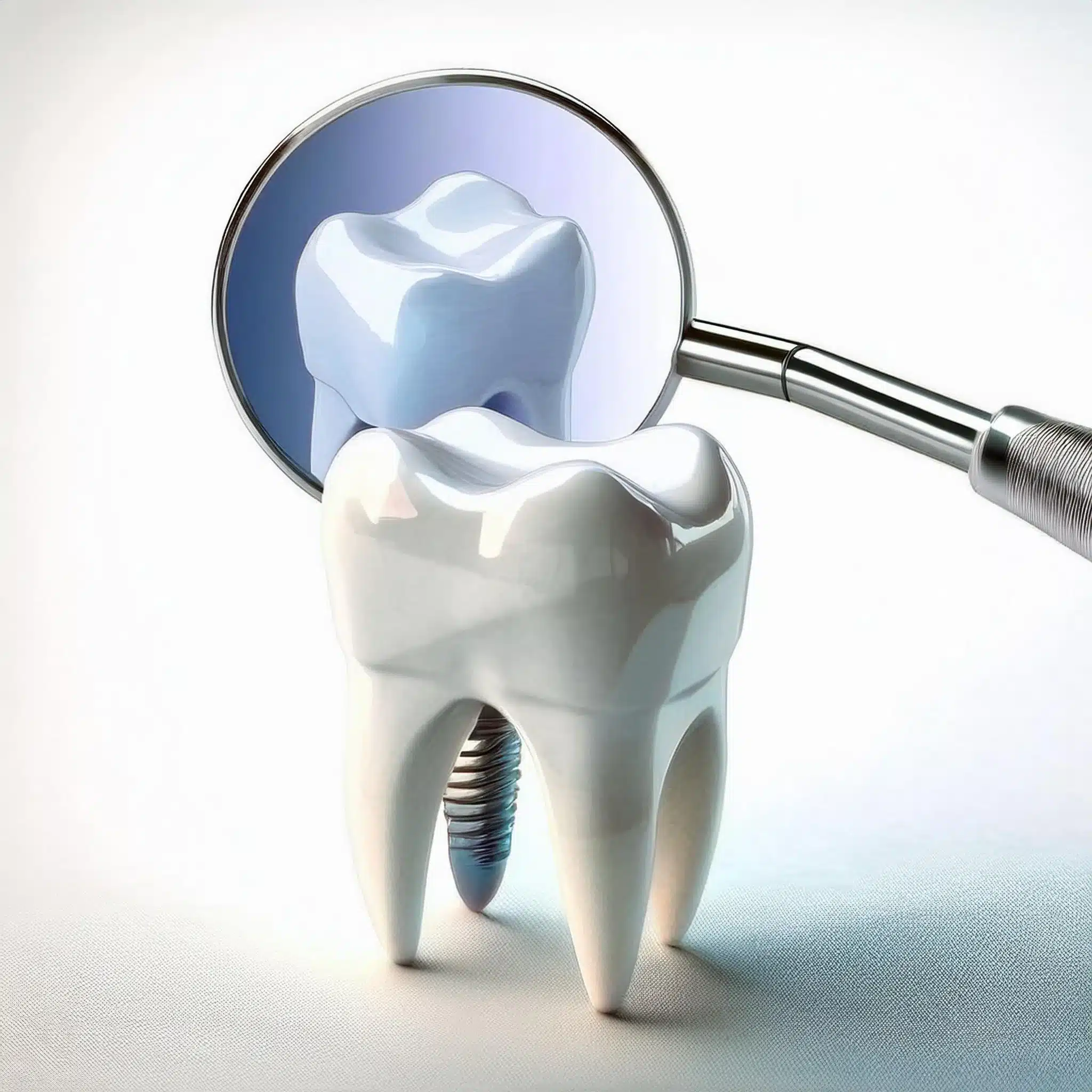
Përfundim & Çështje kryesore
Merr kryesore:
Urat dentare të mbështetura nga implantet janë një zgjidhje e provuar dhe e testuar për dhëmbët që mungojnë.
Ato ofrojnë estetikë, funksionalitet dhe qëndrueshmëri më të mirë sesa protezat tradicionale ose urat.
Shkalla e suksesit të urave të mbështetura nga implantet dentare është e lartë, deri në 98% gjatë 10 viteve (4).
konkluzioni:
Urat dentare të mbështetura nga implantet janë një zgjidhje popullore për dhëmbët që mungojnë.
Me shkallën e tyre të lartë të suksesit dhe qëndrueshmërinë afatgjatë, ato janë një opsion i provuar dhe i testuar për pacientët që kërkojnë të rivendosin buzëqeshjen e tyre dhe të përmirësojnë shëndetin e tyre oral.
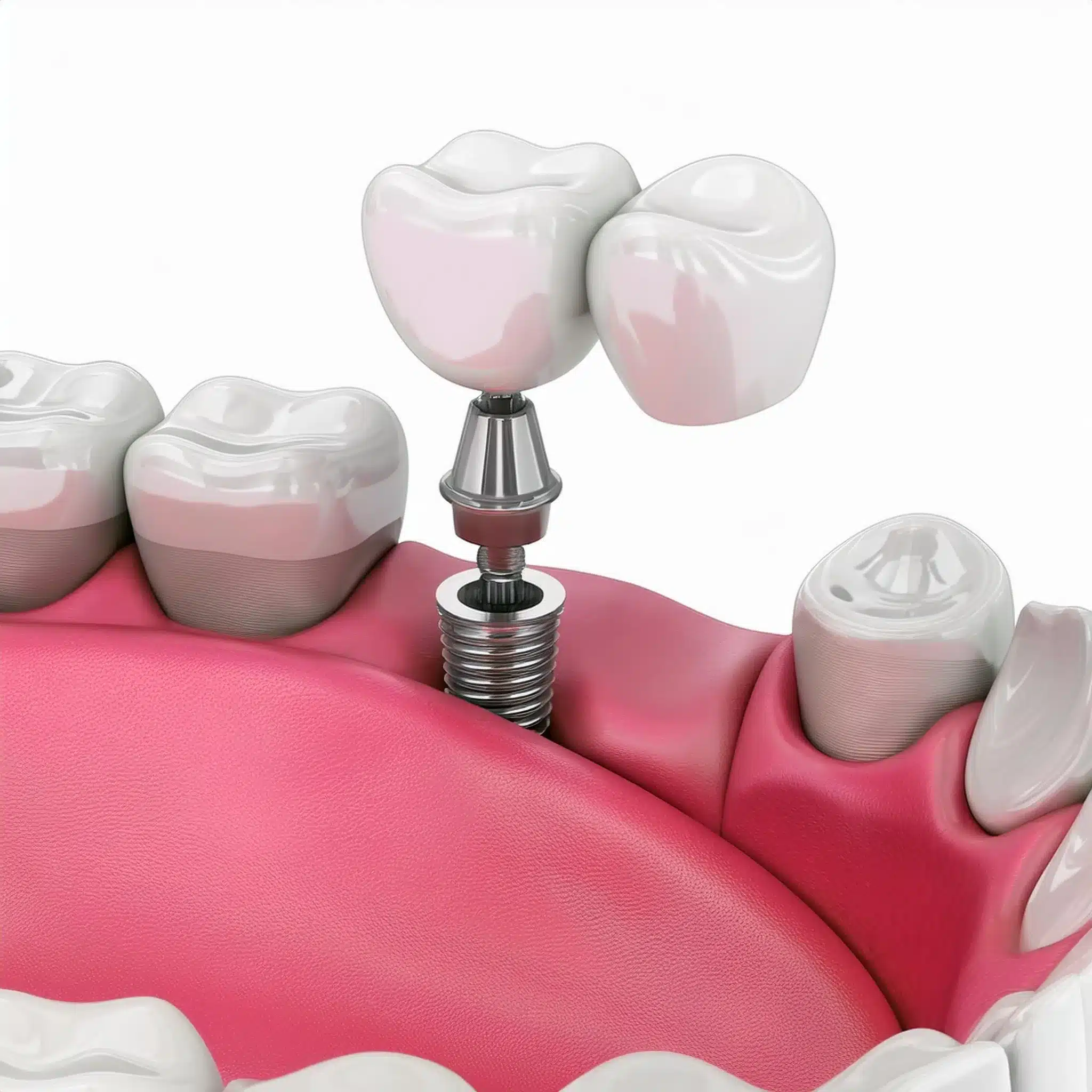
FAQ
Referencat
Esposito M, et al. Ndërhyrjet për zëvendësimin e dhëmbëve që mungojnë: lloje të ndryshme të implanteve dentare. Cochrane Database Syst Rev. 2014;(7):CD003815.
Neni: Ndërhyrjet për zëvendësimin e dhëmbëve që mungojnë: lloje të ndryshme të implanteve dentare
Albrektsson T, et al. Implantet dentare - a janë më të mira se dhëmbët natyralë? Eur J Oral Sci. 2018;126(3):227-236.
Neni: Implantet dentare - a janë më të mirë se dhëmbët natyralë?
Bhatnagar VM, et al. Implantet dentare: Një përmbledhje. J Clin Diagn Res. 2016;10(9):ZE01-ZE04.
Temat e ScienceDirect. Implanti Dentar: Një Përmbledhje.
Esposito M, et al. Implantet dentare: Një rishikim sistematik. Eur J Oral Implantol. 2017;10(2):153-164.
Rrjeti JAMA. Me implante dentare të integruara.
Scopus. Vendosja e implanteve dentare në tuberozitetin maksilar: një rishikim sistematik.
Neni: Vendosja e implanteve dentare në tuberozitetin maksilar: një rishikim sistematik

